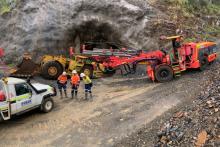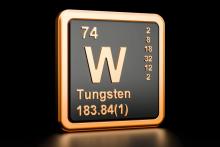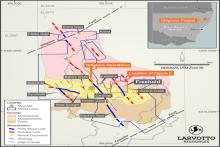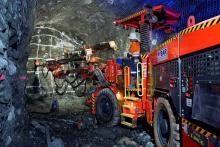Larvotto Resources story from the $3m purchase of its Hillgrove gold and antimony project in NSW 2 years ago to the $720m takeover bid it just received from US industrial metals player UCAC is remarkable however you look at it. The question now is does the company go the whole nine yards, get into production, stretch the mine life and reap the dividends or just submit and hand execution risk over to the 800 pound gorilla.

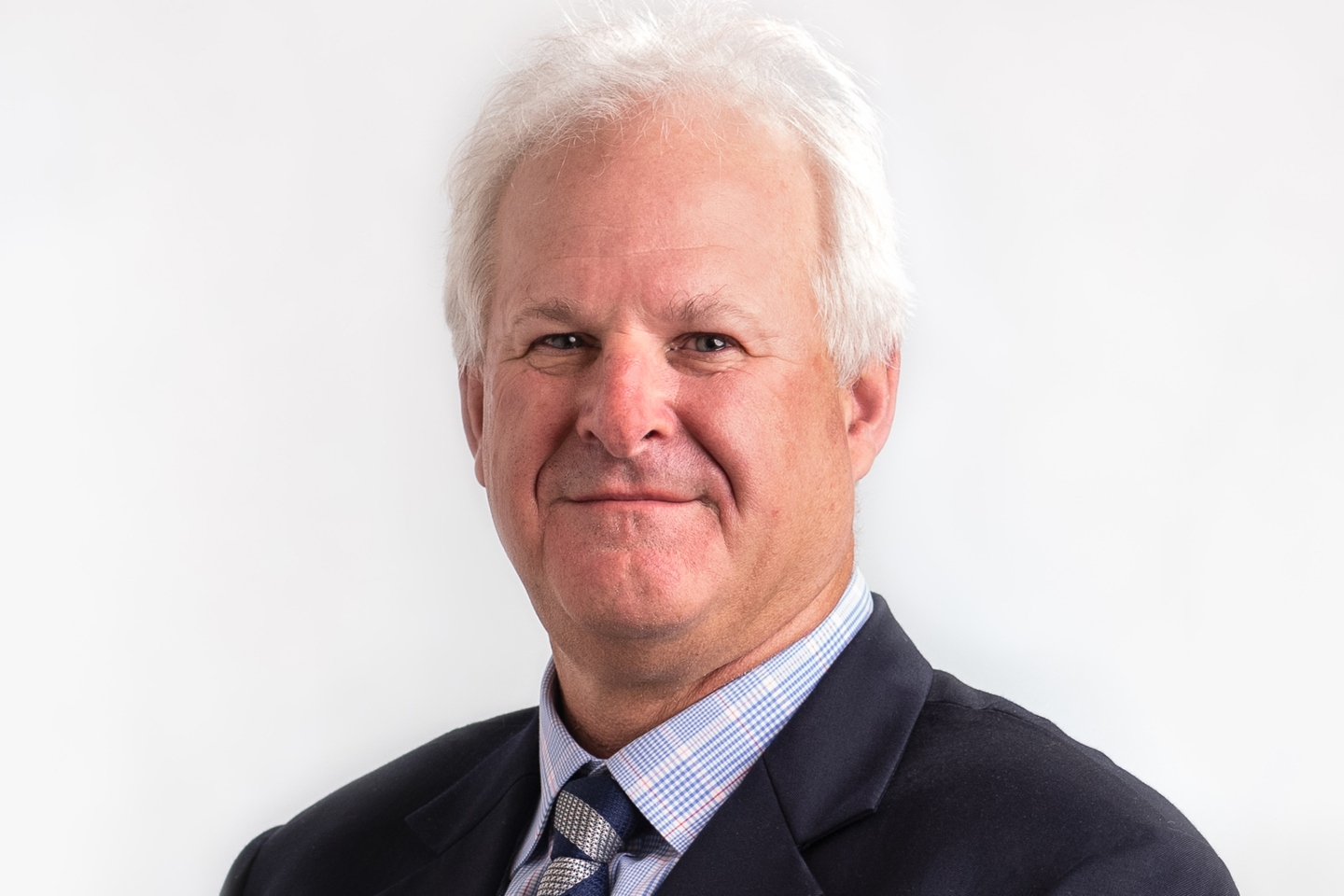
There’s a difference between buying well and buying the right thing well.
Larvotto Resources did both just 22 months ago when it stole the Hillgrove antimony‑gold field and mining plant in New South Wales from Administrators for what now looks like an almost criminal amount at just $3 million plus the replacement of a $5 million environmental bond that is refundable.
At the time antimony was trading at around US$10,000 a tonne and gold was cellar dwelling – relative to today’s price - at US$2000 an ounce. Fast forward to today and the gold price is on fire trading at more than double that amount while at the same time the antimony price has sprouted wings charging about four times higher in the same time. It’s the latest metal d’jour which everyone wants because of its new found critical minerals status – not to mention its use in armaments amongst other things.
When purchased, Hillgrove came replete with gold and antimony resources in the ground, a mining plant that could be relatively easily refurbed and an exploration package that by itself would be a company maker.
Since then, the Ron Heeks-led Larvotto has moved at breakneck speed to add more tonnes of antimony and more ounces of gold with the drill bit. It has also raised millions from investors eager to get exposure to the two rampaging metals. Earlier this month Larvotto even awarded an EPCM contract to fully refurb the plant, signaling its intention to actually get mining.
And then along came the 800 pound gorilla in the form of the United States Antimony Corporation (USAC) which has just lobbed a $720m plus takeover bid for Larvotto that was trading at a market cap of $440m a week ago but closed out yesterday closer to $670m.
USAC itself is worth about US$1.7b and is listed on the NYSE.
It is a significant industrial minerals player with subsidiaries in the US, Mexico and Canada. It sells a number of different antimony products, zeolite, and other precious metals primarily in the US. It also processes third party ore, mostly into antimony oxide, antimony metal and antimony trisulfide and processes some precious metals at its facilities located in both Montana and Mexico.
USAC had already been hoovering up Larvotto shares ahead of lobbing the takeover bid over the fence. At 5.56pm on Friday, when most market players were trying to make decisions about which bar to hit, an announcement that USAC has sucked up 10 per cent of Larvotto’s shares quietly made its way onto the ASX.
Since the start of the month, USAC has thrown almost $56m at the market to suck up 51,685,160 Larvotto shares, giving it a neat headstart in its takeover bid that would see USAC give up 6 of its shares for every 100 of Larvotto’s in the proposed all scrip takeover. According to Larvotto, the non‑binding, indicative offer values Larvotto at about A$1.40 per share.
However, it’s the speed of Larvotto’s journey from almost zero to hero that is the real story here. Hillgrove came with a permitted plant, underground development and a mining pedigree stretching back more than a century. Larvotto then pushed it through study gates at a clip: a Pre‑Feasibility Study in 2024, and by May this year a Definitive Feasibility Study laying out an eight‑year mining plan at a 525,000 tonnes‑per‑annum nameplate and 85,000 gold‑equivalent ounces per year. The mid-case on that study showed a $694 million post‑tax NPV, an IRR of 102 per cent with a payback of just 11‑months. Notably, that same mid‑case is built on the assumption of a US$2,850/oz gold price and US$41,000/t stibnite.
The funding playbook has also moved fast. Post‑DFS, Larvotto locked in a US$105 million senior secured bond, then firmed up a $60 million equity raising and a $5 million SPP and recently ticked over to Final Investment Decision to proceed to construction.
On the ground, the development clock is already running. MIQM has been engaged on an EPCM basis to upgrade the processing plant, targeting about 0.525Mtpa with an ultra‑fine grind and filtered dry tailings. Bulk earthworks are underway and redundant equipment is being pulled out; site offices are up and grid power has been restored after a main transformer repair and production is expected in the second quarter of 2026. All of which places Larvotto in the danger window within the purview of these 800 pound gorillas who hang around waiting for those milestones to be ticked before moving in.
What makes Hillgrove interesting is not just the capex‑to‑NPV arithmetic; it’s the product mix and timing. The DFS frames average recovered output at about 40,500 ounces of gold per year and 4,878 tonnes of antimony, with all‑in sustaining costs for the gold swinging deeply into the negative in the mid‑price case when antimony credits are applied. Notably, Larvotto says Hillgrove could supply about seven per cent of global antimony demand once humming - not many Western projects can claim that line.
Exploration has continued to tighten the geological model too, and frankly, has kept the grade narrative hot. Diamond drilling at Eleanora‑Garibaldi has been producing thick, high‑tenor intercepts that stitch into multiple lodes: recent highlights include 28.1m at 5.68 g/t AuEq from 186m with a 5.4m run at 11.99 g/t AuEq from 151.6m and 2.0m at 23.64 g/t Au from 117m in the same corridor. Golden Gate, a near‑mine target, is also showing continuity between historic reef systems, all of which point to a potentially longer mine life than the current 8 years. But the catch for Larvotto is it can’t value those outyears in an NPV without redoing its DFS – enter the 800 pound Gorilla who no doubt has been doodling on the back of an envelope about what those outyears might potentially add to the company’s financial outlook.
The recent drill work has flowed into a resource base the company updated as part of its study work. Globally, Hillgrove carries 8.77Mt at 4.0 g/t gold and 1.1 per cent antimony for 1.135 million ounces of gold and 96kt of antimony in the combined resource table, with an ore reserve of 3.01Mt at 6.6 g/t AuEq for 636,000 AuEq ounces. It’s a high‑grade, structurally‑controlled system with room to step out along strike and at depth, with the Bakers Creek and Garibaldi corridor still looking undercooked.
The corporate backdrop explains USAC’s timing. The group told Larvotto it sees the combination creating a vertically‑integrated antimony producer across allied jurisdictions, with Hillgrove concentrate as near‑term feed into USAC’s Montana and Mexico processing hubs. USAC’s indicative letter references a newly awarded, sole‑source five‑year contract with the US Defense Logistics Agency for antimony ingots, with a ceiling value of up to US$245 million. Nothing is binding yet and the Larvotto board is running the slide rule over the offer with its advisers.
Put it together and you get the arc: Larvotto bought Hillgrove well, ran hard at studies and permits, banked serious funding, started building, and now a strategic player with downstream muscle wants the whole show. That doesn’t happen unless the geology is real and the development path credible. Whether or not USAC ends up with the keys however is uncertain.
The agonising battle for Larvotto shareholders is whether or not they want to hang around for execution risk or hedge their bets holding stock in USAC where Hillgrove will be little more than a pimple on its US$1.7b bum.
Or do they go the whole nine yards by getting into production, drilling out the near mine resources, stretching the mine life and the NPV and ultimately enjoying a potentially big dividend for years to come….a thought that is obviously not lost on that 800 pound gorilla.
Is your ASX-listed company doing something interesting? Contact: matt.birney@businessnews.com.au






